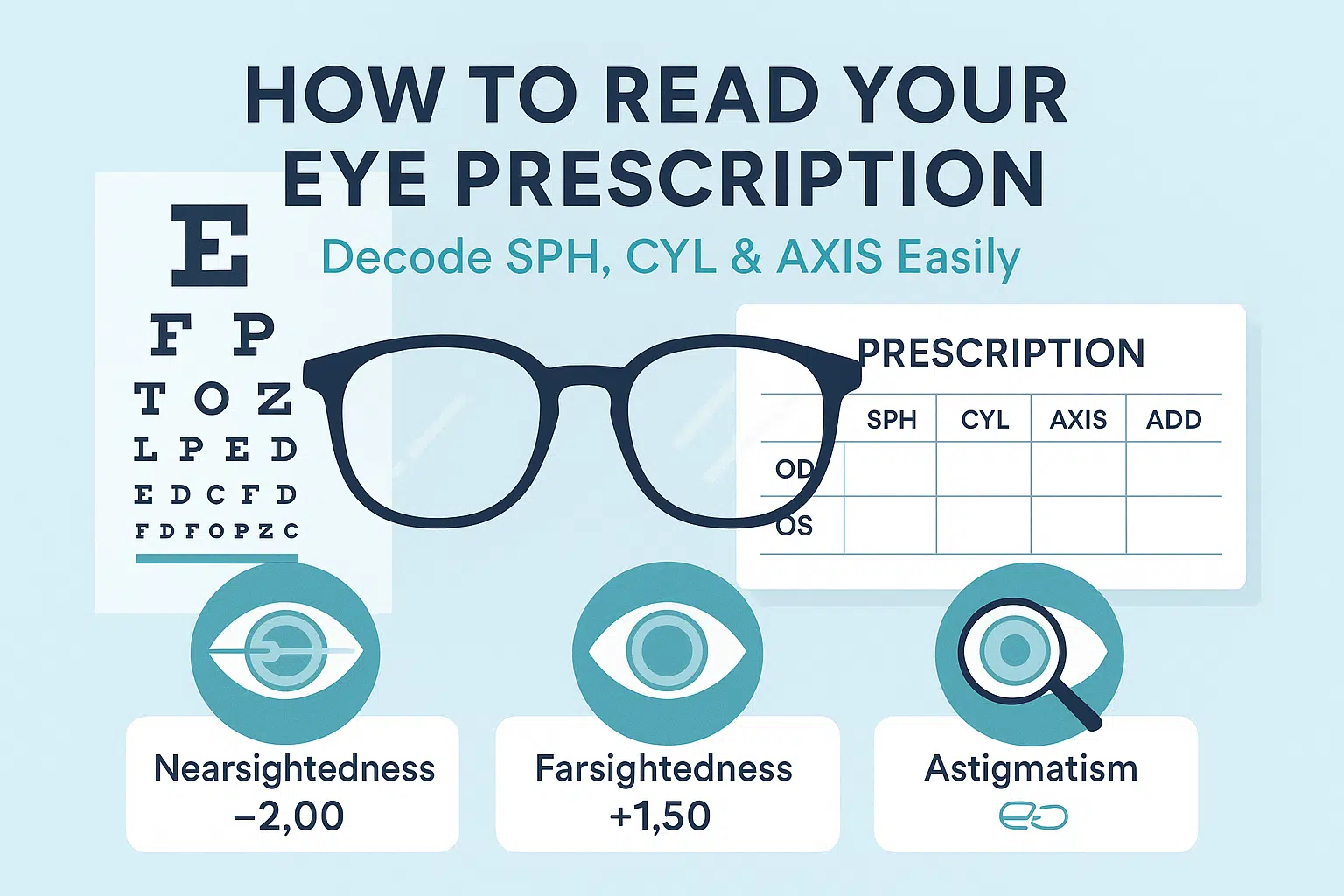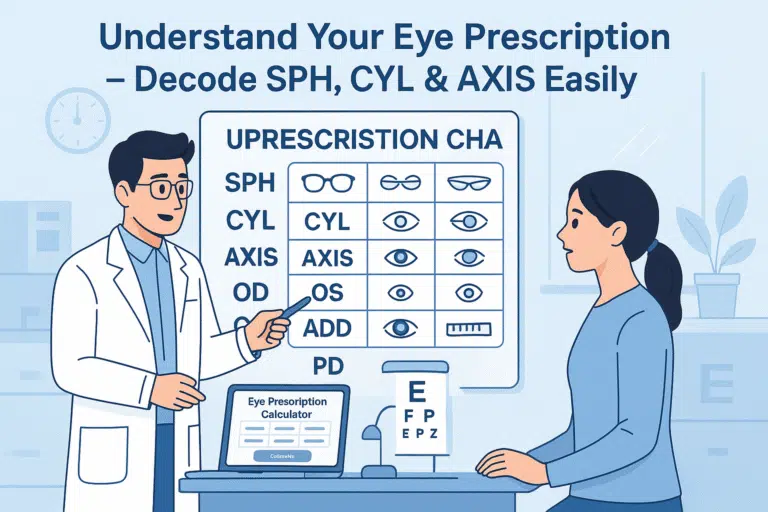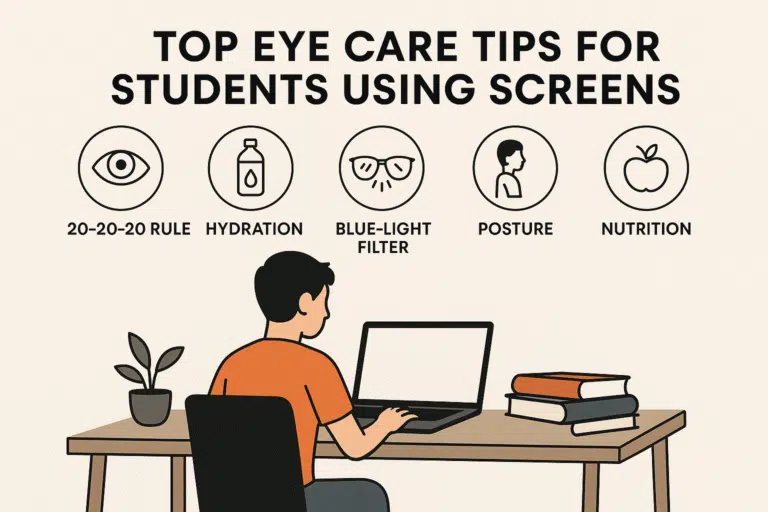What Your Eye Prescription Really Means (SPH, CYL, AXIS Explained)
Have you ever looked at your eye prescription and thought, “What do all these numbers even mean?” Whether it’s a -2.00 or a mysterious “CYL” and “AXIS,” understanding your prescription can feel confusing — but it doesn’t have to be.
I’m Laura, the owner and writer of EyesOnHunt.com, where I help readers like you understand everything about eye health, vision correction, and eyewear. I want to make difficult optical subjects simple enough that you will be able to take care of your eyes with knowledge and understanding.
In this blog, I’ll explain everything you need to know about your eye prescription
What Is an Eye Prescription?
At the time of an eye checkup, you are given a prescription, a written document of what you need in vision correction by your optometrist. It tells whether you are nearsighted (myopic), farsighted (hyperopic), or have astigmatism or presbyopia.
The prescription of your glasses is very important, as this is what dictates the lens power that you require to see well, whether you are using glasses or contact lenses
How to Read Your Eye Prescription
If you’ve ever stared at your prescription slip, wondering what “SPH”, “CYL”, and “AXIS” mean, don’t worry — I’ll help you decode it.
Main Components of an Eye Prescription
- OD and OS
- OD means Oculus Dexter (Right Eye).
- OS means Oculus Sinister (Left Eye).
- Sometimes you’ll see OU, which refers to both eyes.
- SPH (Sphere)
- It shows if you’re nearsighted (-) or farsighted (+).
- The more, the better in terms of prescription.
- CYL (Cylinder)
- It measures astigmatism — an irregularly shaped cornea causing blurred vision.
- AXIS
- It indicates the orientation of astigmatism (a number between 0°–180°).
- ADD
- Used for reading or progressive lenses; shows additional magnifying power for close-up vision.
- PD (Pupillary Distance)
- The distance (in mm) between your pupils — ensures lenses align with your eyes correctly.
How to Calculate Your Eye Prescription
The number of prescriptions is relative to your actual eye power, so you can find out the calculation either by hand or using the prescription calculator online.
Here’s how it works:
1. For Single Vision (Distance or Near)
To calculate your eye power, you mainly use your SPH value.
- Example:
If your prescription says SPH -2.00, it means you need -2.00 diopters of correction — you’re mildly nearsighted. - A positive number (+) means you’re farsighted.
2. For Astigmatism (CYL + AXIS)
If your prescription includes CYL and AXIS, your total eye power depends on both values.
To estimate:
Effective power = SPH + ½ CYL
For instance,
SPH = -2.00
CYL = -1.00
Then, Effective Power = -2.50 D
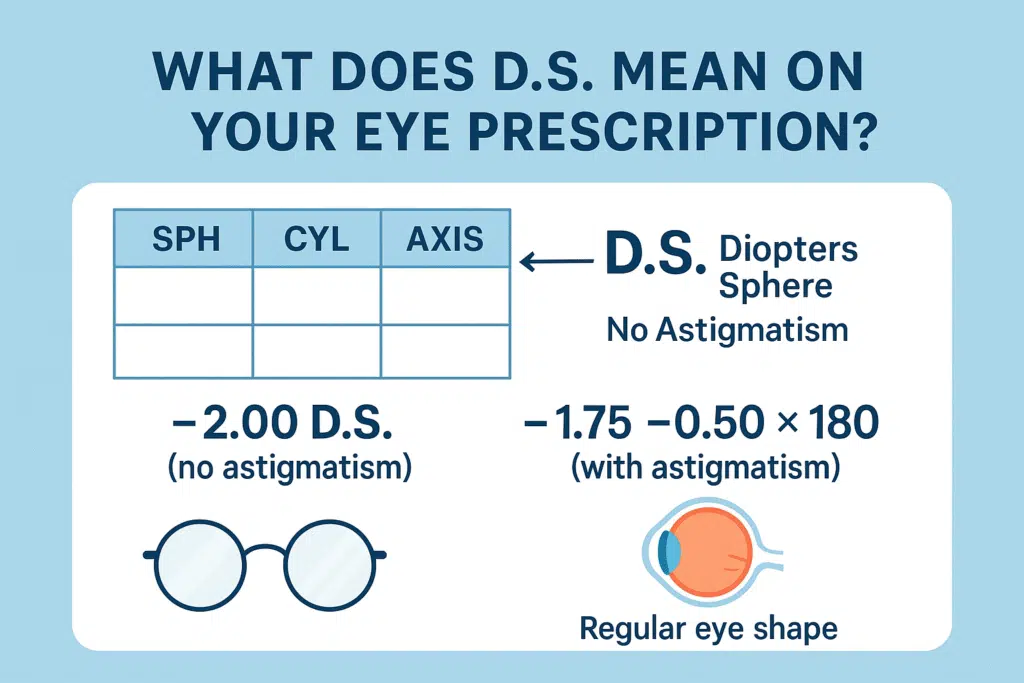
What Does My Eye Prescription Mean?
Every number tells a story about your eyes. Here’s how to interpret them:
| SPH Range | Vision Type | Meaning |
|---|---|---|
| 0.00 to ±0.25 | Normal | No correction needed |
| -0.25 to -2.00 | Mild Myopia | Slightly nearsighted |
| -2.25 to -5.00 | Moderate Myopia | Medium nearsighted |
| -5.00 or higher | High Myopia | Strong prescription |
| +0.25 to +2.00 | Mild Hyperopia | Slightly farsighted |
| +2.25 or higher | High Hyperopia | Strong farsightedness |
How to Calculate Eye Power from Prescription
Many people search for “how to calculate eye power from prescription” because they want to know the exact diopter strength of their lenses.
Here’s the basic process:
- Take your SPH value — that’s your base power.
- If you have CYL, calculate half its value and add it to your SPH.
- The result gives an estimated average lens power.
Example:
SPH = -3.00, CYL = -1.00 → Effective Power = -3.50 D.
That means your total correction is around -3.50 diopters.
Read Also: How to Improve Eyesight When You Already Wear Glasses
How to Calculate ADD in Eye Prescription
If you use bifocal or progressive lenses, your prescription includes an ADD value — the additional power you need for reading or close work.
Here’s How to Calculate ADD:
- ADD = Near Vision Power − Distance Vision Power
Example:
Distance SPH = -2.00
Near SPH = 0.00
Then ADD = +2.00
This means you need an extra +2.00 diopters to focus on near objects — common for people over 40 with presbyopia.
So, when you see “+2.00 ADD” on your prescription, that’s your reading lens boost.
How to Calculate My Eye Prescription
If you ever wonder, “how to calculate my eye prescription manually?”, here’s a quick summary:
- Note down your SPH, CYL, and AXIS.
- Combine SPH + ½ CYL = approximate effective power.
- For ADD, use Near SPH − Distance SPH.
- In each eye, separately do the same in OD and OS.
- Compare results with an online calculator to verify accuracy.
How Bad Is My Eye Prescription Calculator UK (Region-Specific)
If you’re in the United Kingdom, your optometrist might use slightly different chart standards, but the SPH and CYL format remains the same.
A UK-based eye prescription calculator typically aligns with:
- 20/20 vision → 0.00 D
- 20/40 vision → around -0.75 D
- 20/100 vision → around -2.00 D
So, a “how bad is my eye prescription calculator UK” gives you results relevant to UK vision standards (Snellen or LogMAR charts).
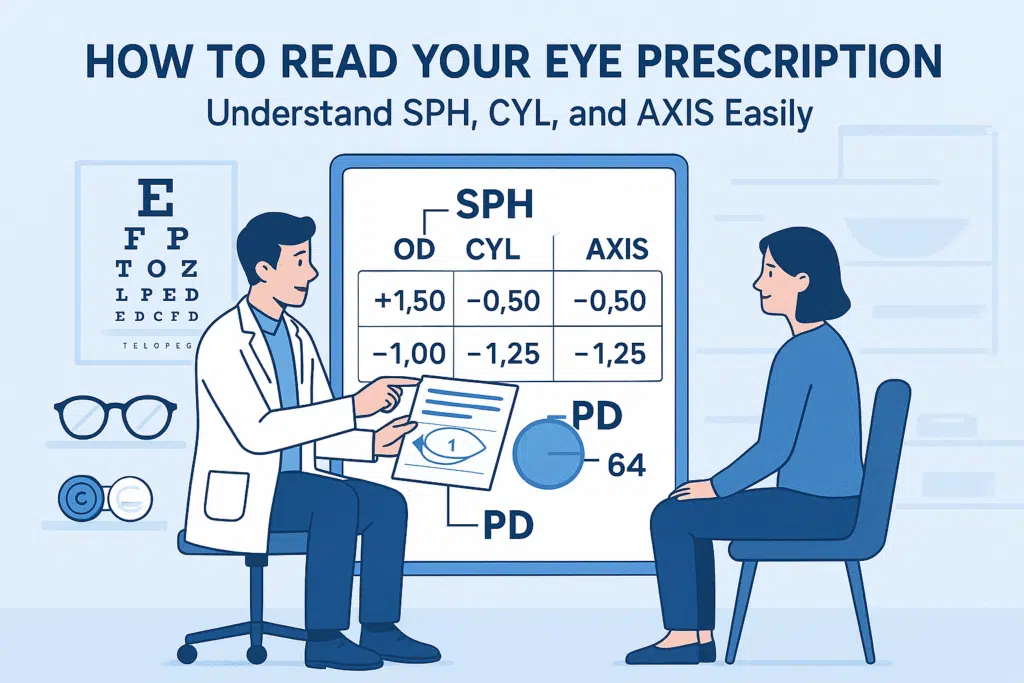
Why Understanding Your Eye Prescription Matters
Understanding your eye prescription isn’t just about knowing numbers — it’s about taking control of your vision health.
Here’s why it matters:
- You can compare your old and new prescriptions.
- You can choose the right glasses or contact lenses online.
- You can use calculators to track vision progress.
- You’ll be more informed when discussing eye health with your optometrist.
Read Also: How to Clean Glasses Properly (Avoid 5 Mistakes)
Final Thought
Understanding your Debt Burden Ratio (DBR) isn’t just about numbers — it’s about taking control of your financial future. Whether you’re applying for a personal loan, credit card, or home mortgage in the UAE, keeping your DBR below the 50% limit set by the Central Bank greatly increases your approval chances.
If you manage your income wisely, pay off existing debts on time, and avoid unnecessary credit, you’ll not only maintain a healthy DBR but also build a strong financial profile that banks trust.
For more, please visit our prescription calculator designed for people like you.

